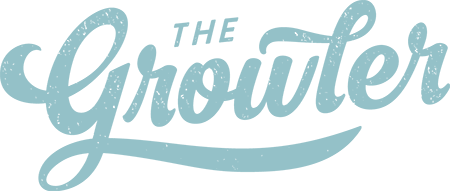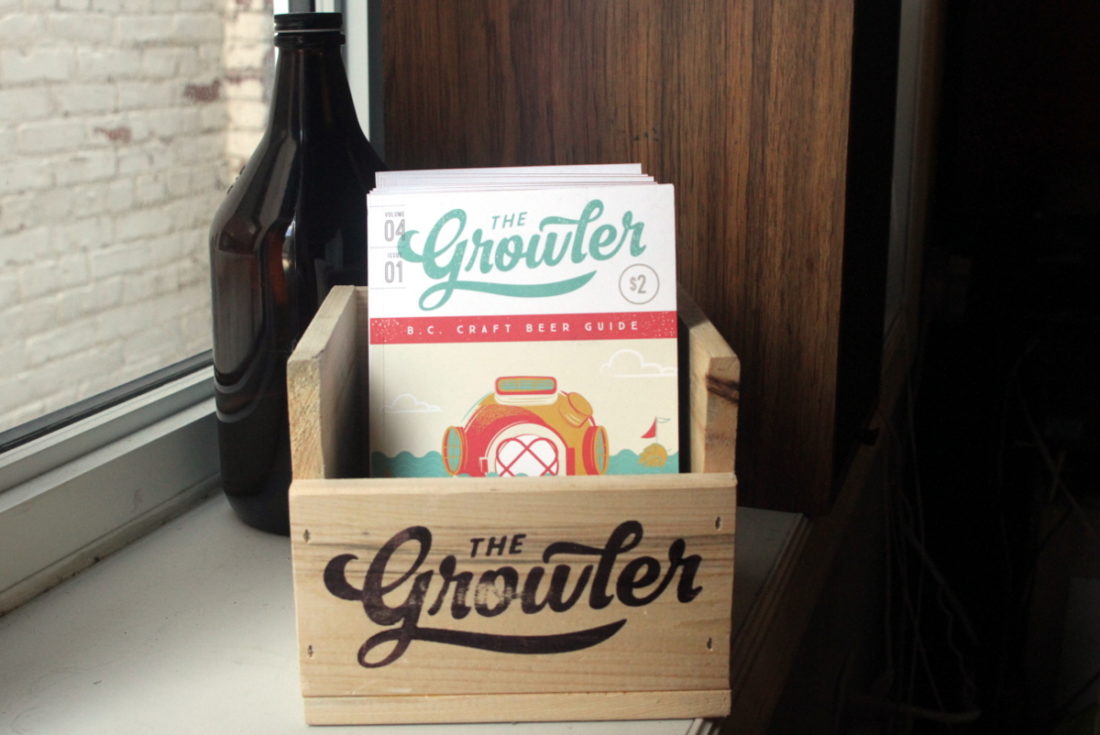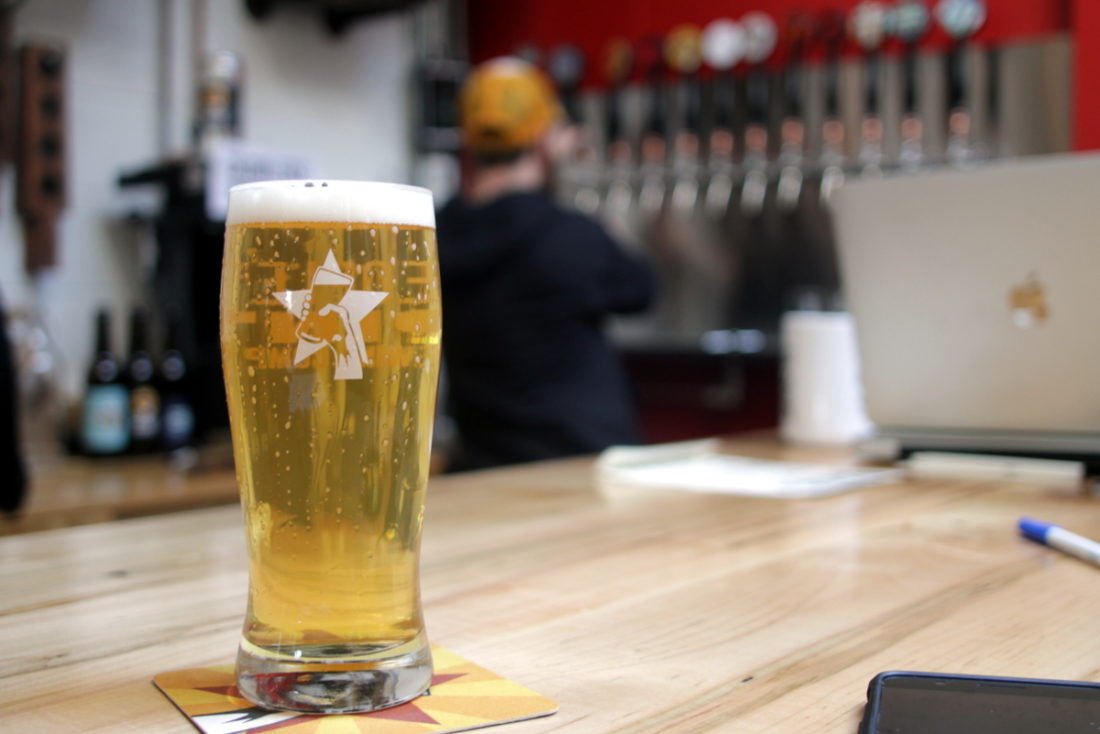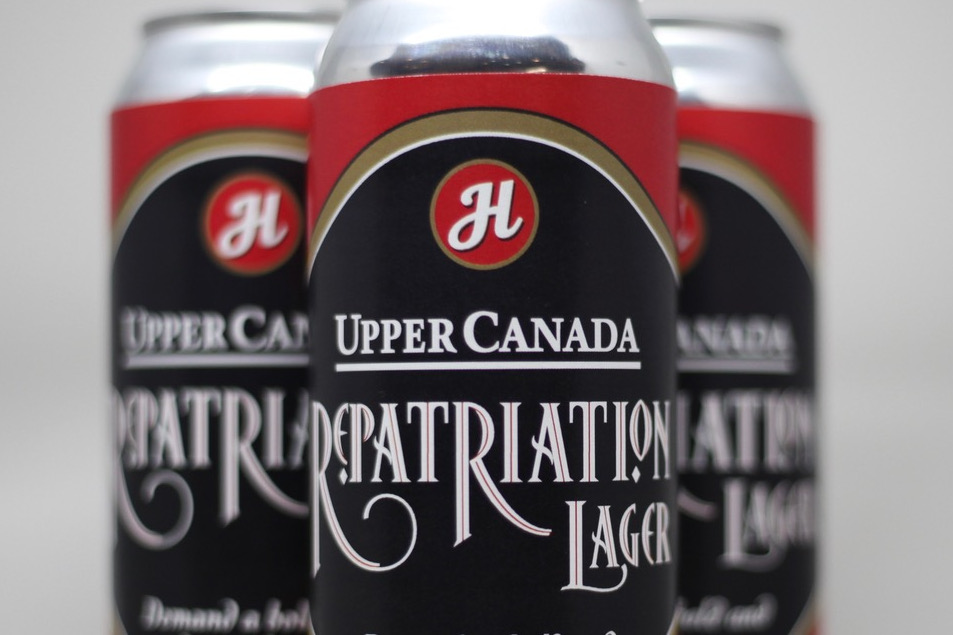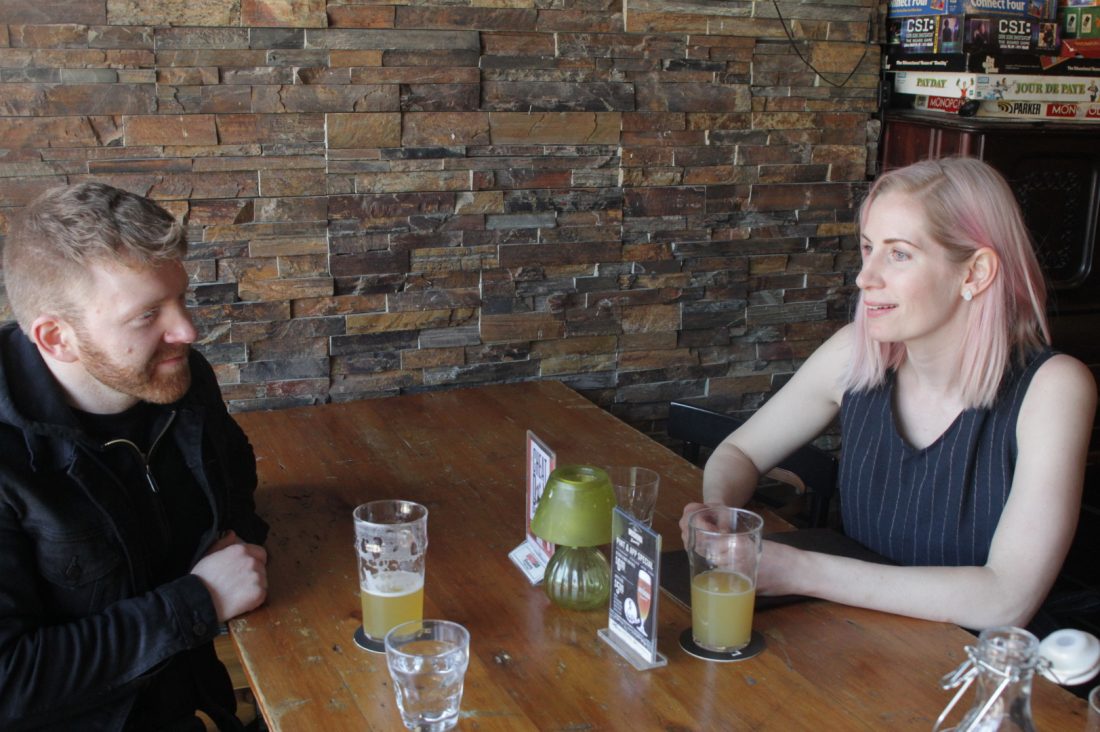
To paraphrase everyone’s favourite prison movie, Ontario’s craft beer scene “went and got itself in a big damn hurry.” And, so with so many breweries opening production facilities, barrel warehouses, satellite locations and spin-off brands, it was good to sit with two brewers bucking the trend.
Mary Beth Keefe of Granite and John Jenkinson of Folly are two brewers who head operations that are content to sell most of their beer at their home brewpub instead of being in hundreds of retail outlets.
True to type for their style of brewery, the beer they make goes well with food and the styles rotate fairly often.
That doesn’t stop either of them from challenging themselves to push the boundaries of their brewing knowledge. The two well-respected brewers were kind enough to meet me at The Jim on Bloor for a discussion of everything from Scandinavian farmhouse yeast strains to adding a closed fermenter to a previously all-ringwood brewery.
GROWLER: You both are head brewers at breweries you didn’t start. Can you talk about what that’s like?
KEEFE: It is my family’s business. My dad opened Granite when I was 10. And it was very much a part of my life from the very beginning. I started helping him in the brewery from when I was 11. Filling casks and doing whatever he needed me to do. I thought it was amazing and cool what he did, “oh my dad makes beer, that’s what I want to do when I’m older.”
But then I went to university and I studied something completely different. I went travelling for a while and met my husband who’s from England and I lived there for a year. I worked in a pub and was just immersed in English ale which is what we do primarily. It was the reminder I needed that what I had back home was pretty amazing.
When I got back from travelling I said, “okay, I’m ready to do this now.” And about five months later, I was in charge because our assistant brewer left and my dad was slowing down in the brewery because he was doing everything else.
JENKINSON: This was not my intended career path. I was involved with the homebrewing community in London—I did my PhD at Western—helped start the brewers’ guild. At some point, I started looking into brewing jobs, too because there weren’t a lot of academic positions available. The original brewers, Chris [Conway] and Christina [Coady] had a job posting up to be a brewer at Folly. I applied for it, got the job, found out it was to take over their position.
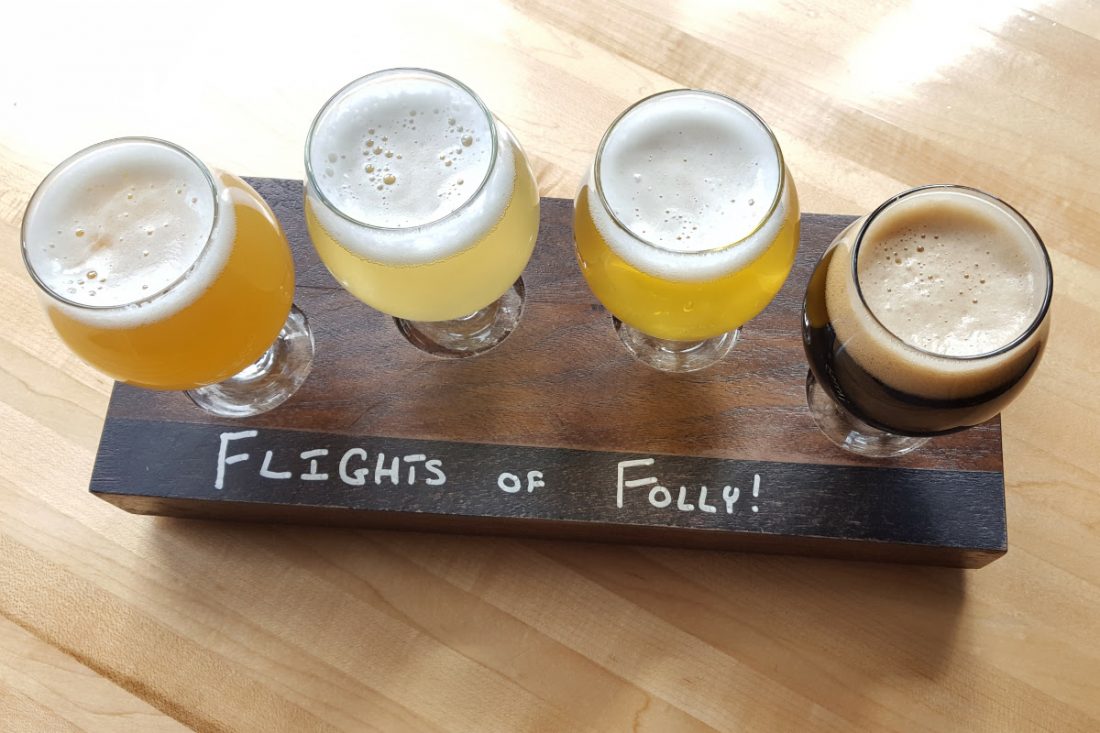
I went from home brewer to brewing at Folly. Realistically, it’s a fairly small system, so it was a natural transition. Obviously, there’s more to do than with homebrewing—draught accounts, ordering and brewing a lot more regularly than I was.
GROWLER: And how has your brewery changed during your tenure?
JENKINSON: I tried to keep it in the style they created. I use yeast that can ferment at warm temperatures because we don’t actually have temperature control at Folly—some tanks have glycol but not all. Using yeasts that can accommodate warmer temperatures is our MO to a certain extent.
I have been exploring different yeasts a little bit more. We’ve done 16 batches with different kveik blends.
GROWLER: Can you give us a primer on what kveik beers are?
JENKINSON: Kveik is a familiy of Norwegian yeasts. They’ve been domesticated but not commercialized. They’re from these farmhouse breweries where farmers brew their own beer. People have been going around figuring out the orthography of the different brewing traditions of these villages and families and they’ve noticed the yeast is different than what we use in commercial brewing contexts.
Richard [Preiss] at Escarpment Labs has been instrumental in getting kveik strains and blends going in Ontario.
They’re just a really, really weird yeast. They ferment at extremely high temperatures. Some strains cast out at 30 or 40 C. They can ferment lower. There’s one we have going now that can apparently ferment as low as 4 C. It can also ferment at 30 C and produce a clean beer at both temperatures. They don’t produce a lot of phenols or fusel alcohols, so the beer is pretty much ready to drink right away.
KEEFE: With the new fermenter I’m excited to try styles that we weren’t able to do before.
GROWLER: After the NEIPA, what else do you think you’ll do in the closed fermenter?
KEEFE: I’d like to try a saison. I want to do a clean West Coast IPA. I’m a hop head so I love IPAs.
JENKINSON: Have you tried making a New England style with ringwood?
KEEFE: Not really. I didn’t put in as many hops as I should have because I didn’t want to waste them. The aromas would have been lost out the top. I would try it, for sure, in the closed fermenter.
GROWLER: How does being a brewpub affect the way you brew?
JENKINSON: The main problem is the scale. It’s hard to grow when you’re that small. A typical batch we get seven kegs: bottle two of them; minimum of two for draught on site; and that only leaves three to sell [to licensees]. If we do a hoppier New England-style IPA that moves very quickly and nobody outside of the brewpub context hears about those beers.
KEEFE: I love the brewpub aspect because you have immediate feedback and it’s always been mainly positive. Our customers are regulars who have been coming for years and they come because they like things the way they are but they also appreciate the rotating taps that are happening now.
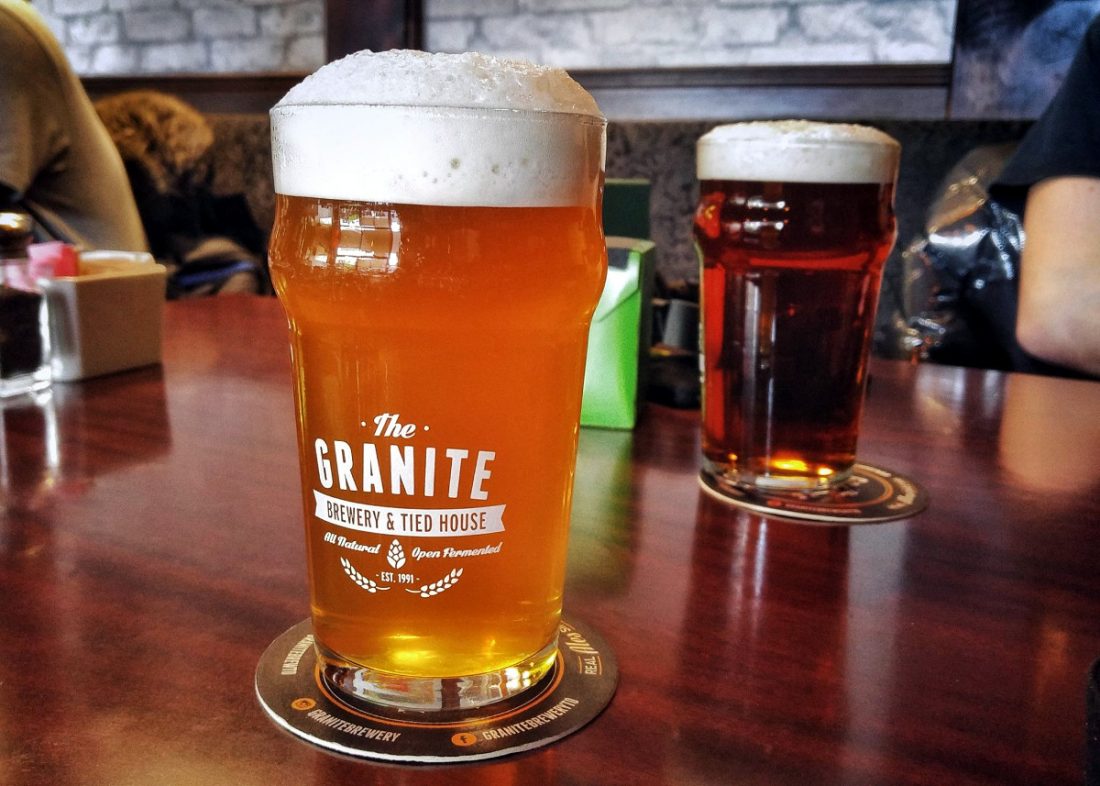
GROWLER: What style do you wish was less constrained by seasons?
JENKINSON: There are definitely seasonal trends I wish didn’t exist. I love to make and drink grisettes. For anyone that doesn’t know the style: it’s essentially (but not entirely) a low-ABV saison. If we brew them under four per cent in the winter months they don’t sell at all.
KEEFE: It seems the lower alcohol beers only come out in the summer. Like the session IPAs.
JENKINSON: We found if it’s under four per cent that’s when we notice a big change in movement. Grisette, pretty much the same recipe, above four per cent it moves fine, below it doesn’t.
GROWLER: What on the horizon concerns you?
KEEFE: Being established for so long and pretty traditional, there’s not too much concern for us. One thing for drinkers just getting into craft beer, with so many contract breweries, that could affect things slightly is someone picking up a can of beer and it being not great. Going to the LCBO, I do want to try new things but there is too much disappointment I find when doing that. That being said, there are so many great ones that it’s nice to just get what you know sometimes and not be disappointed.
GROWLER: What’s coming up at your brewery that has you excited?
KEEFE: Closed fermenter! The New England IPA will be ready [in May].
JENKINSON: Be excited for grisettes! We’ve really been expanding our selection of naturally carbonated saisons. I think we have more beer in warm storage than cold storage so there’s going to be a lot of highly carbonated saisons over the summer. j
